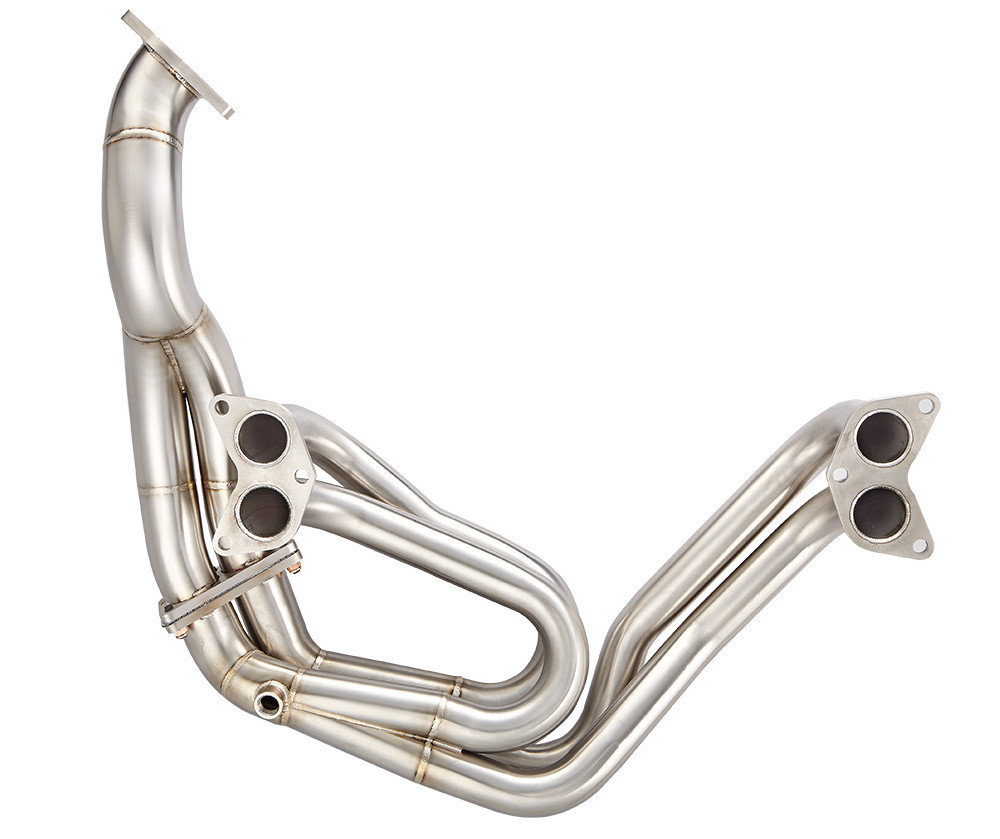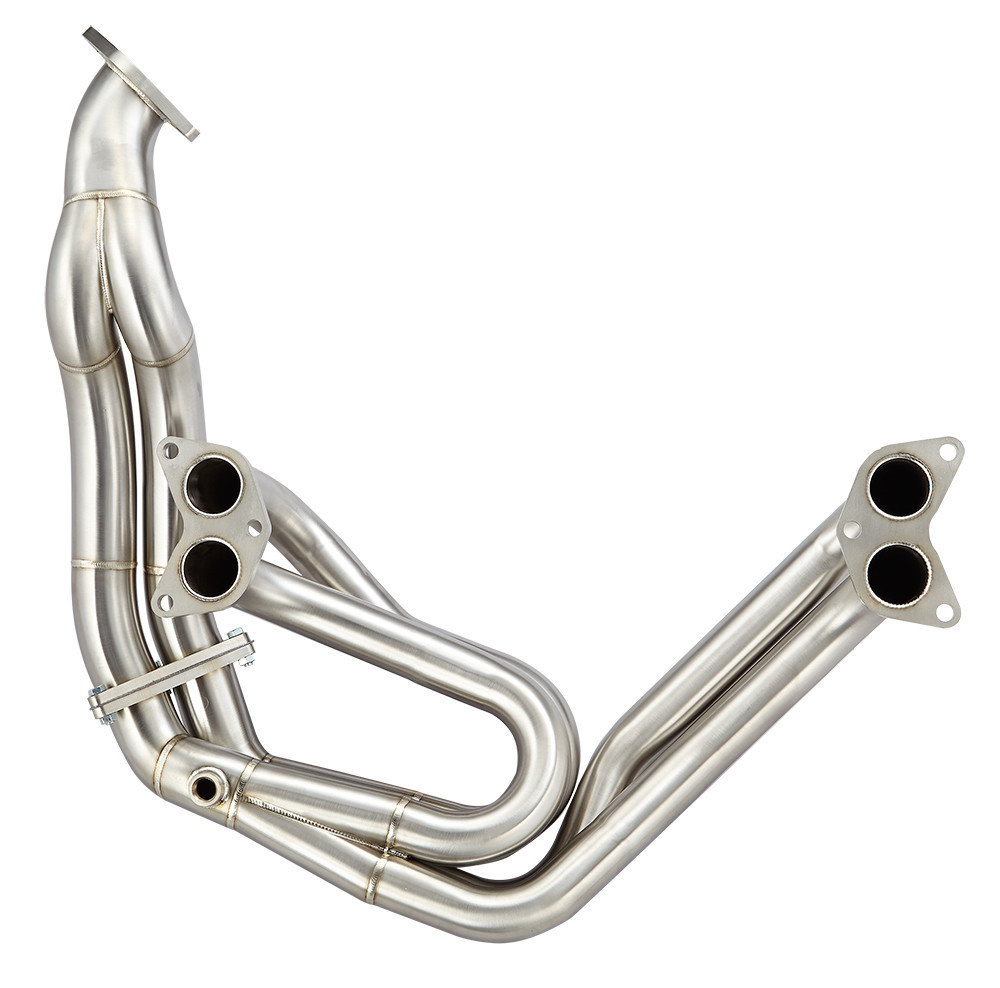|
||||||
| Engine, Exhaust, Transmission Discuss the FR-S | 86 | BRZ engine, exhaust and drivetrain. |
 |
|
|
Thread Tools | Search this Thread |
|
|
#1 |
|
Senior Member
Join Date: Mar 2017
Drives: Q5 + BRZ + M796
Location: Santa Rosa, CA
Posts: 7,883
Thanks: 5,668
Thanked 5,804 Times in 3,299 Posts
Mentioned: 70 Post(s)
Tagged: 0 Thread(s)
|
ACE 150 vs 250 vs 350 (show me the dynos)
I was searching, and I couldn't find a single dyno for someone running an Ace 150 or 250, except for RHD cars, which was 250, and it seemed to leave some of the torque dip in place.
I get that removing the torque dip is the utmost concern for NA applications, and low end torque is desirable for many people running superchargers too, especially centrifugal superchargers, but I was surprised to see nothing on the comparison between these difference overpipes. I would assume some people are doing track sessions and would want more power up top. Does anyone have a dyno graph comparing these different overpipes? I am especially interested in any graphs comparing these overpipes with forced induction. I have a Harrop supercharger, and all I have seen are numbers and dyno graphs from the Ace350 with the Harrop/Edelbrock. The other thing is that the Ace150 is essentially a slightly longer JDL 4-2-1, but the JDL header seems to fill the torque dips on every dyno I've seen posted, so shouldn't all the overpipes fill the torque dip?
__________________
My Build | K24 Turbo Swap | *K24T BRZ SOLD*
|
|
|

|
|
|
#2 | |
|
Airborne at your service
Join Date: Sep 2014
Drives: '17 BRZ Series.Yellow
Location: El Paso, Texas
Posts: 6,325
Thanks: 4,528
Thanked 5,586 Times in 2,928 Posts
Mentioned: 33 Post(s)
Tagged: 2 Thread(s)
|
Quote:
__________________
|
|
|
|

|
|
|
#3 |
|
Senior Member
Join Date: Jan 2018
Drives: 2017 toyota 86
Location: PNW
Posts: 2,131
Thanks: 336
Thanked 1,188 Times in 781 Posts
Mentioned: 16 Post(s)
Tagged: 0 Thread(s)
|
|
|
|

|
|
|
#4 |
|
Senior Member
Join Date: Jan 2017
Drives: brz 2017 hksv2
Location: italy
Posts: 2,196
Thanks: 500
Thanked 1,066 Times in 775 Posts
Mentioned: 65 Post(s)
Tagged: 0 Thread(s)
|
yeah i d like to see them too
the most powerfull configuration i ve driven until now, is a hks v2 I tuned with Skunk2 4-1 el header, it has an extremely evident dip, that doesn t fill out because it knocks if you try to rise timing there, but after 6000 is like a Vtec and screams like crazy i still think a350 is a smart choice for volumetric sc, but would be interesting to see an a250 |
|
|

|
|
|
#5 | |
|
Senior Member
Join Date: Jan 2018
Drives: 2017 toyota 86
Location: PNW
Posts: 2,131
Thanks: 336
Thanked 1,188 Times in 781 Posts
Mentioned: 16 Post(s)
Tagged: 0 Thread(s)
|
Quote:
“150- highest peak HP and lower torque 150- robotic weld at 2-1 merger 250- 1-2%HP drop from 150 and 3-4% more torque 250- 100% hand welded 350- LHD cars only, 100% hand welded 350 dyno sheet available here: http://www.ft86club.com/forums/showt...t=80609&page=5” “ 350= max torque (202.4NM), lowest peak HP (175.1HP) 250= torque (approx 200NM), HP (approx 178) 150= lowest torque (approx 195NM), HP (approx 182) These numbers are approximated off percentages of the 350 when we did a stock dyno run with OEM frontpipe” As far as jdl 4-2-1 vs ace 150, they are very different. The CS400/350 are actually the closest in design. The JDL has much shorter 4-2 runners vs the ace header, and then the JDL 2-1 runners are very long about the same length as the 350/400 ace overpipe I posted this in another thread “ Longer front runners 4-1 or 4-2 increase power at the top end Shorter front runners 4-1 or 4-2 increase power at midrange Longer 2-1 runners increase mid range, Shorter 2-1 runners increase top end.” Obviously with tuning techniques and VVT you can maximize and minimize the pros and cons of these effects to some extent. Personally I’ve never understood the wanting more mid range torque dip argument, I don’t think power under 5k rpm matter too much. Besides in 1st gear you should never be WOT under 5k rpm. With a 350 header you accelerate from stops/onto freeways with 10% throttle with a 250 you use 15% throttle, don’t see why it matters, but at 5k+ rpm both at 100% WOT thats where max performance matters in my opinion. |
|
|
|

|
| The Following 2 Users Say Thank You to 86TOYO2k17 For This Useful Post: | tomm.brz (06-15-2020), Turdinator (06-16-2020) |
|
|
#6 |
|
Airborne at your service
Join Date: Sep 2014
Drives: '17 BRZ Series.Yellow
Location: El Paso, Texas
Posts: 6,325
Thanks: 4,528
Thanked 5,586 Times in 2,928 Posts
Mentioned: 33 Post(s)
Tagged: 2 Thread(s)
|
I ask since he sounded like he was chasing filling in the torque dip. Which the CS400 does pretty well. But yeah, it sacrifices top end.
__________________
|
|
|

|
|
|
#7 |
|
Senior Member
Join Date: Jan 2018
Drives: 2017 toyota 86
Location: PNW
Posts: 2,131
Thanks: 336
Thanked 1,188 Times in 781 Posts
Mentioned: 16 Post(s)
Tagged: 0 Thread(s)
|
Maybe I miss read/understood him. But sounded like he was trying to get top end as high as possible while keeping or not sacrificing mid range, and was wondering if the 150/250 would do this or why it wouldn’t accomplish this. And why it’s not more popular of option vs 350. And not asking to maximize mid range while sacrificing top end (IE CS400)
|
|
|

|
|
|
#8 | |
|
Senior Member
Join Date: Mar 2017
Drives: Q5 + BRZ + M796
Location: Santa Rosa, CA
Posts: 7,883
Thanks: 5,668
Thanked 5,804 Times in 3,299 Posts
Mentioned: 70 Post(s)
Tagged: 0 Thread(s)
|
Quote:
Regardless, I am looking to see a dyno comparing the LHD 150, 250 and 350, specifically with a roots style supercharger, but anything will do. All I have seen is the 350 on NA and FI applications, and I have seen the 250 used on RHD NA vehicle (torque dip wasn't fully filled...could have been tuner issue), and I think I have seen the CS400, but I can't remember. I have seen dynos from all different types of headers that seemed to fill the torque dip from UEL to EL. The JDL EL 4-2-1 header is a shorter ACE 150 in some respects, so I would expect the Ace 150 to have more torque fill down low, yet Ace describes this header as being ideal for cars with short gearing and track cars. Considering 4-1 headers seem to add torque to the top of the rpms, this would imply they are for the people running the shortest of gearing and the maximum of maximum rpms at a fast track. Then there are headers like the HKS header, which is more like the stock header with the cat removed (seems like just cutting a welding a test pipe would be cheaper); ie, the header has an equal length of 4-2-1 runners versus the JDL, which is 4-2 header with a single outlet, or a typical 4-1 header that is 4 long runners that come together at the end in a single outlet.
__________________
My Build | K24 Turbo Swap | *K24T BRZ SOLD*
|
|
|
|

|
|
|
#9 | |
|
Airborne at your service
Join Date: Sep 2014
Drives: '17 BRZ Series.Yellow
Location: El Paso, Texas
Posts: 6,325
Thanks: 4,528
Thanked 5,586 Times in 2,928 Posts
Mentioned: 33 Post(s)
Tagged: 2 Thread(s)
|
Quote:
__________________
|
|
|
|

|
|
|
#10 |
|
Senior Member
Join Date: Jan 2018
Drives: 2017 toyota 86
Location: PNW
Posts: 2,131
Thanks: 336
Thanked 1,188 Times in 781 Posts
Mentioned: 16 Post(s)
Tagged: 0 Thread(s)
|
All the ace headers are great, very unique design to have the most overall benefits.
But in specific regards to 150 vs 250 vs 350, when released the 350 was the most expensive 150 was 300$ less 250 was 150$ less. The 350 was the most heavily marketed. The 350 has the highest peak torque gains, albeit because of the gain in torque dip. And i think the torque dip although very real and would be good to eliminate i think is way over hyped in how detrimental and impactful the dip really is. But it leads to easy marketing by being able to make true claims of “40 peak ft lbs of gains over stock!” But this gain is in the dip and has minimal real “performance” increase as you don’t “performance” drive in the dip. Still a great overall option vs other headers but the 250 seems it has the meatiest “performance” powerband. |
|
|

|
| The Following User Says Thank You to 86TOYO2k17 For This Useful Post: | Irace86.2.0 (06-15-2020) |
|
|
#11 |
|
Senior Member
Join Date: Mar 2017
Drives: Q5 + BRZ + M796
Location: Santa Rosa, CA
Posts: 7,883
Thanks: 5,668
Thanked 5,804 Times in 3,299 Posts
Mentioned: 70 Post(s)
Tagged: 0 Thread(s)
|
Just for reference:
Stock 4-2-1 header  HKS 4-2-1 header (essentially a stock header with a test pipe)  JDL 4-2-1 header (longer primary and secondary runner length than stock or HKS; primaries look longer than secondaries)  Ace 150 header and overpipe (4-2 header with 2-1 overpipe, primary runners are longer than JDL and secondary runners are probably shorter than JDL)  Ace 250 header and overpipe (longer secondary runners by maybe 4-6'', which could match JDL secondary runner length)  Ace 350 header and overpipe (even longer secondary runners by another 4-6''; primary and secondary runner length is about equal) 
__________________
My Build | K24 Turbo Swap | *K24T BRZ SOLD*
Last edited by Irace86.2.0; 06-15-2020 at 04:19 PM. |
|
|

|
|
|
#12 |
|
Senior Member
Join Date: Jan 2018
Drives: 2017 toyota 86
Location: PNW
Posts: 2,131
Thanks: 336
Thanked 1,188 Times in 781 Posts
Mentioned: 16 Post(s)
Tagged: 0 Thread(s)
|
@Irace86.2.0
Do you have measurements on those headers 2-1 lengths? Visually it seems the Jdl 2-1 secondary runners are closest to the 350 maybe 250, but 150 seems substantially shorter though. And the longer 4-2 runners has a big impact as well. |
|
|

|
|
|
#13 | |
|
Senior Member
Join Date: Mar 2017
Drives: Q5 + BRZ + M796
Location: Santa Rosa, CA
Posts: 7,883
Thanks: 5,668
Thanked 5,804 Times in 3,299 Posts
Mentioned: 70 Post(s)
Tagged: 0 Thread(s)
|
Quote:
For roots style systems, the question is what would be best? Low end torque is always good because boost builds with RPMs, but there seems to be more low/mid range torque than centrifugal units, so maybe a 250 or 150 would give more even gains across the rpms. Unlike NA applications, maybe there is different things to consider with FI applications. I don't know. Regardless, I would like to see any dynos with the 150 or 250 system. Maybe the 350 will be best because there is more volume to the headers, regardless of runner length or something I haven't considered.
__________________
My Build | K24 Turbo Swap | *K24T BRZ SOLD*
|
|
|
|

|
| The Following User Says Thank You to Irace86.2.0 For This Useful Post: | Jyn (06-24-2020) |
|
|
#14 |
|
Senior Member
Join Date: Jan 2018
Drives: 2017 toyota 86
Location: PNW
Posts: 2,131
Thanks: 336
Thanked 1,188 Times in 781 Posts
Mentioned: 16 Post(s)
Tagged: 0 Thread(s)
|
|
|
|

|
| The Following User Says Thank You to 86TOYO2k17 For This Useful Post: | Irace86.2.0 (06-15-2020) |
|
|
|
|
 |
|
|